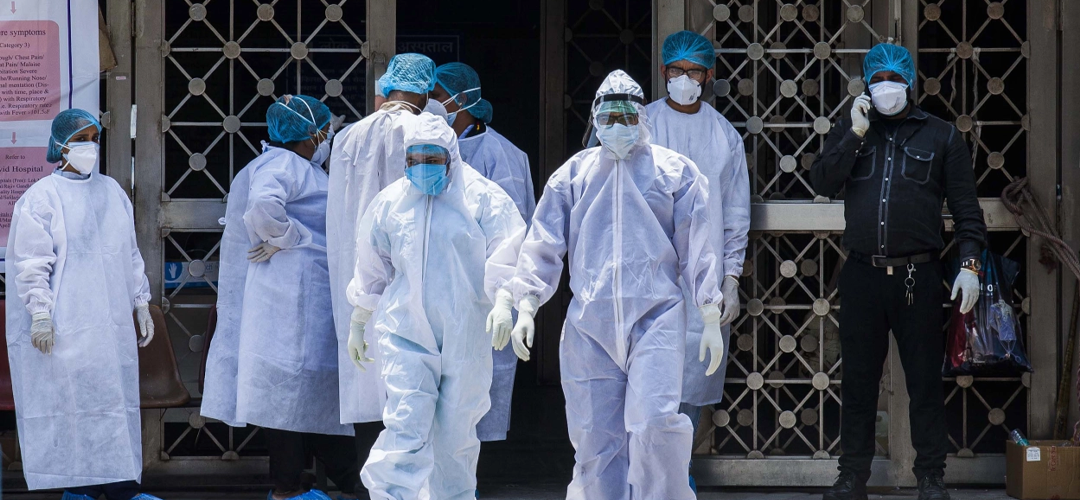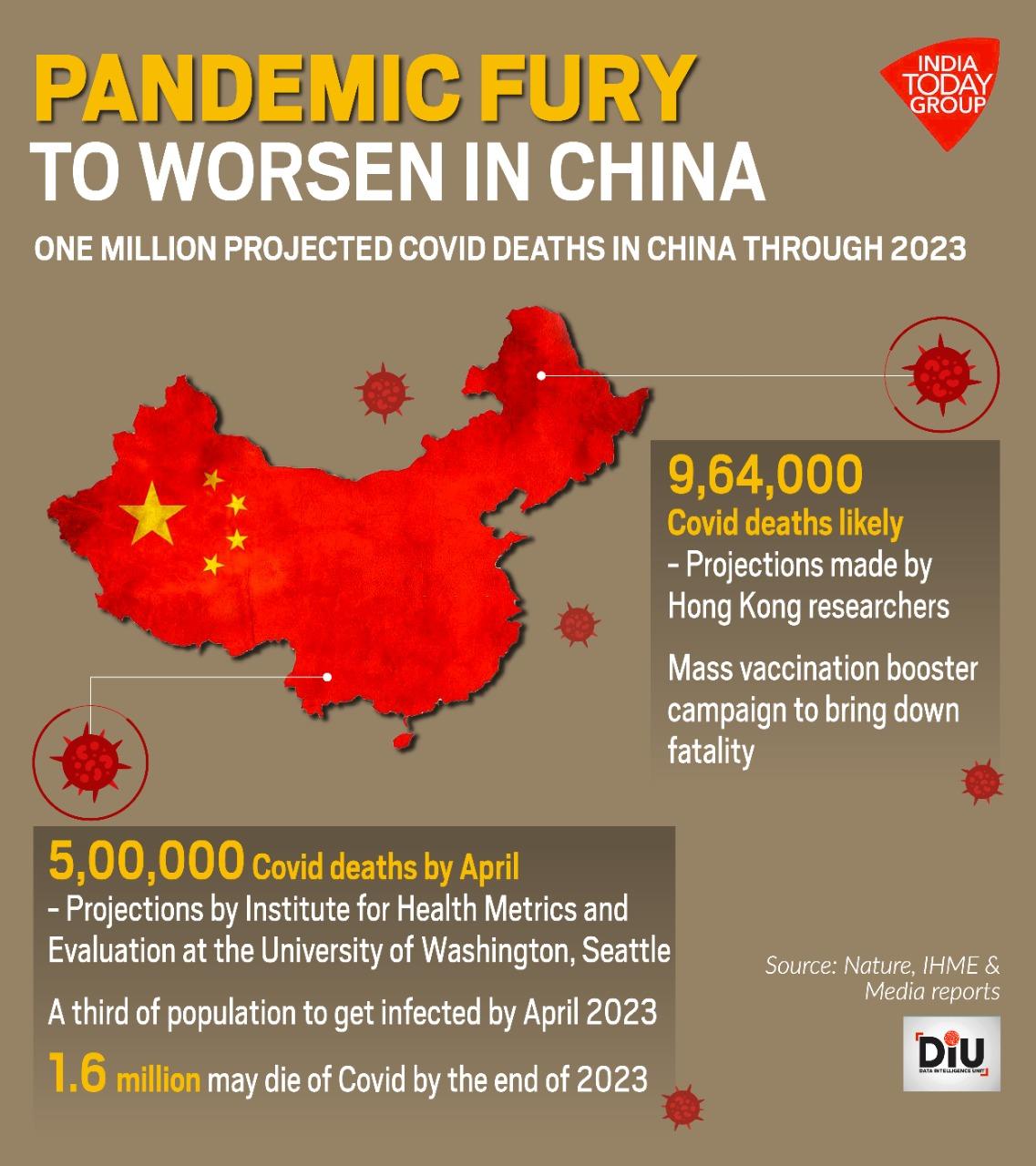CHINA’S GLOBAL SCARE, AGAIN!
December 24, 2022 | Expert Insights

The events in China are a sobering reminder that the danger is not yet over. With an official figure of more than 6 million deaths from the pandemic, there are rising concerns about whether the BF-7 variant, which is on a killing spree in China, will spread to the rest of the world. Is it Wuhan 2.0?
It seems we are reliving the nightmare as Covid overwhelms hospitals and the daily death toll grimly rises in China. A statistical model released by the US-based Institute for Health Metrics and Evaluation (IHME) predicts that Covid-19 might cause 1.6 million deaths in China between now and 2023, with a third of the population likely to contract the virus by next April. This happened right after the Chinese government abruptly ended its zero-Covid policy.
Background
The COVID subvariant omicron has rapidly grown into several subvariants since it first appeared in late 2021. A single subvariant, BF.7, has just been discovered to be the primary variant circulating in Beijing, causing a larger rise in COVID infections throughout China.
Although the characteristics of this variation have been the subject of alarming warnings from China, it does not appear to be spreading as quickly elsewhere in the world. The omicron variation BA.5 has a sub-lineage known as BF.7, short for BA.5.2.1.7. According to reports from China, BF.7 has the strongest capacity for infection. It spreads faster than other variants, has a shorter incubation period, and has a higher propensity to infect individuals who have already contracted COVID, received a COVID vaccination, or both.
R0, or the fundamental reproduction number, for BF.7 is considered to range from 10 to 18.6. Accordingly, an infected person will spread the virus to 10 to 18.6 other people on average. According to research, Omicron has an average R0 of 5.08.
It is believed that the high rate of BF.7 transmission, along with the danger of concealed spread brought on by a large number of asymptomatic carriers, is making it extremely difficult to contain the epidemic in China.

Analysis
With a strict definition of COVID deaths, China has reported only 5241 since the epidemic started- a minuscule figure compared to over a million in the U.S., nearly 700,000 in Brazil and half a million in India! According to the Chinese National Health Commission, COVID deaths include those brought on by pneumonia and respiratory failure in patients carrying the virus.
The country has seen a rise in vaccination rates in recent weeks, but it is still unclear whether enough immunisation will be carried out in the upcoming weeks to stave off the effects of an Omicron wave.
China has nine locally designed COVID-19 vaccinations currently in use, but they must be upgraded to combat the highly contagious Omicron variety. So far, China has refused to import any foreign vaccine to fight the COVID virus. As per Health Policy Watch, Chinese vaccines are only about 60 per cent effective against severe infection compared to the over 90 per cent protection offered by the latest mRNA vaccines. As per WHO data, while 87 per cent of Chinese people are vaccinated with two shots of the local homologous vaccines, Sinopharm and Sinovac-Coronavac, only 55 per cent are boosted.
Germany had dispatched the first shipment of BioNTech COVID-19 vaccinations to China exclusively for German expats. This is the first foreign coronavirus vaccine to arrive in the nation.
The WHO stated that it was prepared to collaborate with China to enhance data collection for important variables, including hospitalisation and mortality. Importing vaccines and making plans to create them in as many locations as feasible would also be encouraged.
India View
The number of instances in India had been steadily declining, with the average daily case count reaching 158 in the week ending December 19, 2022.
However, there has been a steady increase in the average daily cases recorded globally over the past six weeks, with 5.9 lakh instances reported in the most recent week.
Indian states have been ordered to improve the surveillance system for whole genome sequencing of positive case samples. This will enable tracking any new variants through the Indian SARS-CoV-2 Genomics Consortium (INSACOG) network, making it easier to implement suitable public health initiatives. Each day, samples from all Covid-19 positive patients must be sent to INSACOG Genome Sequencing Laboratories (IGSLs) for sequencing.
Mandatory masking and restrictions on crowding are likely to make a comeback, as also preparations for large-scale testing. India has learnt, at a high cost, that no preparation is too much when faced with a pandemic like COVID that refuses to die.
Assessment
- It is too early to go into panic mode for India and the rest of the world. However, we know enough about the intercontinental transmission of the virus after nearly three years to be smug that it is only China's problem. The Indian government has initiated preparatory action at the highest level early on, which is a very good move. For a country the size of India, even partial mobilisation for a pandemic will take time.
- Like in 2019, the flow of information coming out of China is hazy and confusing; the authoritarian system is not comfortable sharing details when things go wrong, neither with its populace nor the rest of the world. This must be corrected as mankind has learnt at a heavy cost that pandemics are not state secrets; a global collaborative action mounted at the earliest is the best defence.








Comments